Shipping Emission Calculators
This tab will explain in detail how to use every emission calculator that deals with shipping of any kind.
Using the Shipping Emission Calculators
(Scope 3)
Select "Emissions"→ Select “Shipping” → Select “Add Record” → Select “Calculate it for me”
Next, you will be brought to the Shipping Calculator. There are several freighting types to choose from, all of which include;
Cargo Ship, Freight Flights, Freight Train, Freight Vans, HGV ( Heavy Goods Vehicle ), or HGV Refrigerated.
Depending on which kind of transportation type you select, there will be a variety of information needed and all of which can be found below;
a) Cargo Ship :
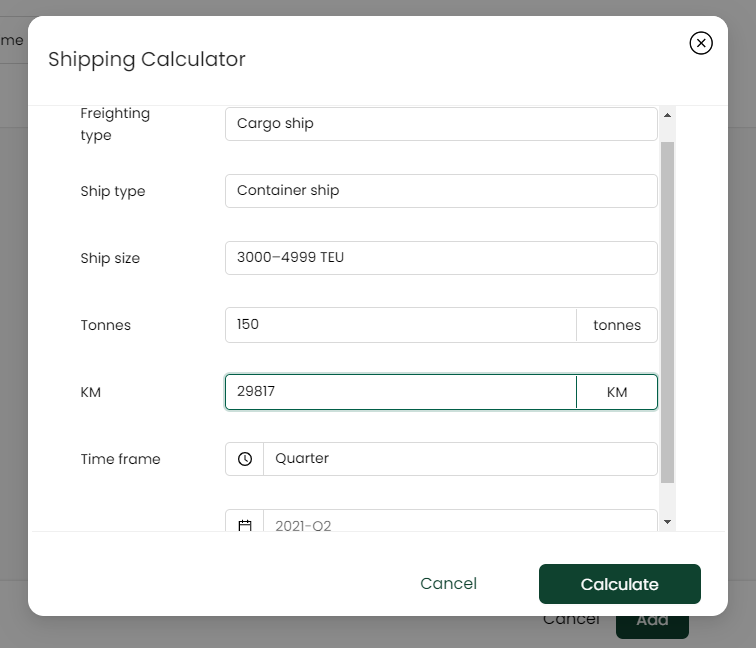
Shipping Emission Calculator
The information necessary to compute the cargo ship calculation is as follows;
-
Ship Type : This can be a Bulk Carrier, Container Ship, General Cargo, Large RoPax Ferry, Refrigerated Cargo, RoRo Ferry, or a Vehicle Transport.
-
Ship Size : Select the size of the vessel, note if you do not know you can simply select 'average'
-
Tonnage of Goods Transported : Input the weight in tonnes of the cargo being transported to determine the emission calculation, this could be located on an shipping invoice.
-
Distance Travelled : In put the distance the ship travelled in Kilometers.
-
Time Frame : Select the timeframe you want to calculate your emissions for.
You can associate the emissions with a given office location and also provide a title, and if necessary you can provide a more detailed description for the activity to include further detail.
*Note : TEU stands for Twenty-foot equivalent unit, which refers to the twenty foot long containers used on cargo boats. Dwt stands for deadweight, which is the difference in weight between the displacement and the mass of the empty vessel.
b) Freight Flights :
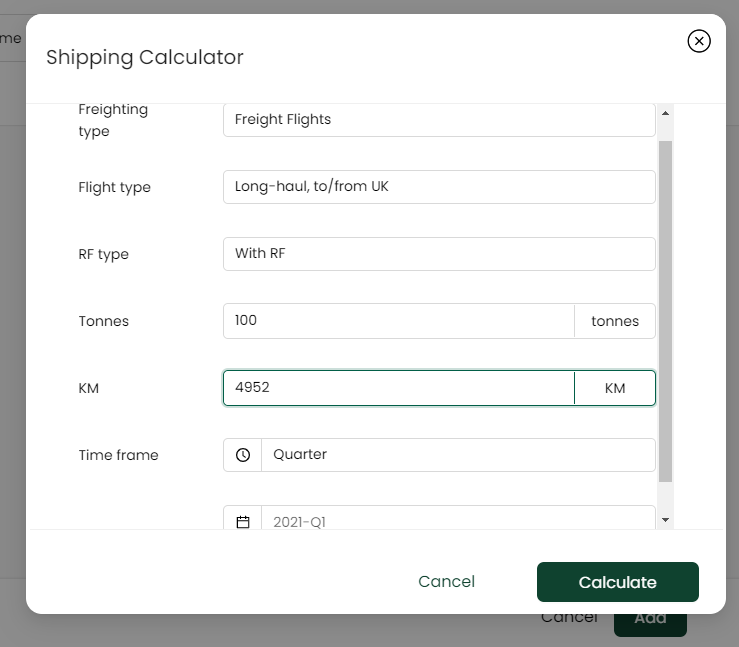
Freight Flight Emission Calculator
The necessary information to compute a freight flight's emission is as follows;
-
Freight Type : Choose from Domestic, International, Short or Long Haul.
-
RF Type : Also known as the 'Radiative Forcing' type, users should generally use ‘with RF’, which incorporates a 90% increase in emissions. The absence of the RF Type will result in a more conservative estimate. If your historical data does not include RF, then you should rebaseline your historical dataset to include the effect going forward.
-
Weight of Goods : You will need to know the total tonnage of goods that are being transported for your company
-
Distance Travelled : You must have records of the exact distance travelled to deliver your goods from their origin.
-
Time Frame : Finally, you must have the time frame which the goods were being transported.
Now coordinate which office it is representative of and provide a title, and if necessary you can produce a description for the activity to include further detail.
c) Freight Train :
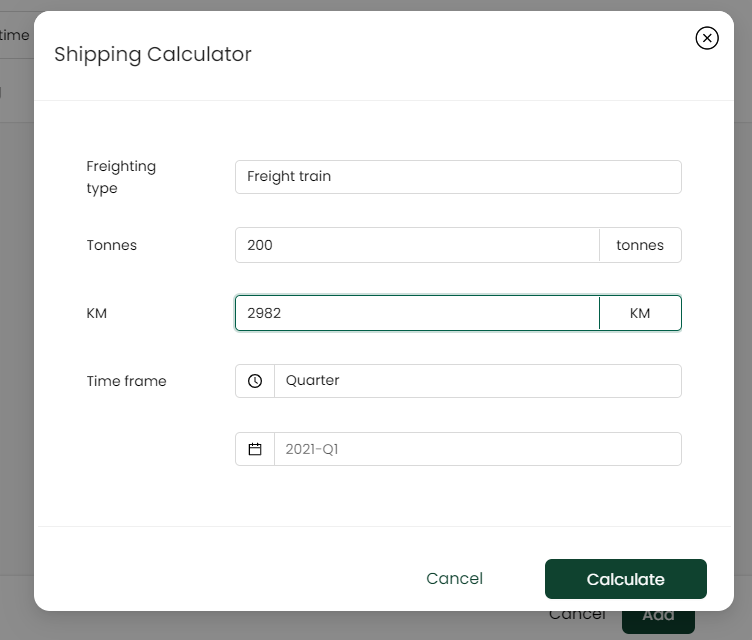
Freight Train Emission Calculator
All of the necessary information to compute is as follows;
-
Tonnage of goods : The total amount of weight, in tonnes, that is being transported via railway.
-
Distance Travelled : You will need the total distance travelled via freight train to reach its destination in Kilometers.
-
Time Frame : Finally, you must have the time frame which the goods were being transported.
Now coordinate which office it is representative of and provide a title, and if necessary you can produce a description for the activity to include further detail.
d) Heavy Ground Vehicles (with/without refrigeration) :
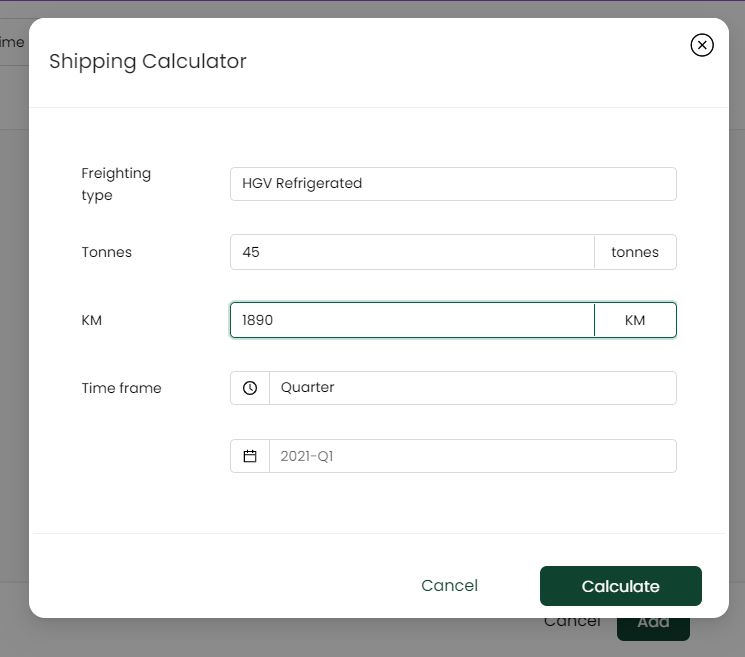
HGV Emission Calculator
All of the required information to compute is found below;
-
Tonnage of goods : You must know the weight of the goods you are having transported in tonnes.
-
Distance Travelled : The distance travelled by the freight van must be converted into Km before being plugged into the calculator.
-
Time Frame : Finally, you must have the time frame which the goods were being transported.
Now coordinate which office it is representative of and provide a title, and if necessary you can produce a description for the activity to include further detail.
e) Freight Vans :
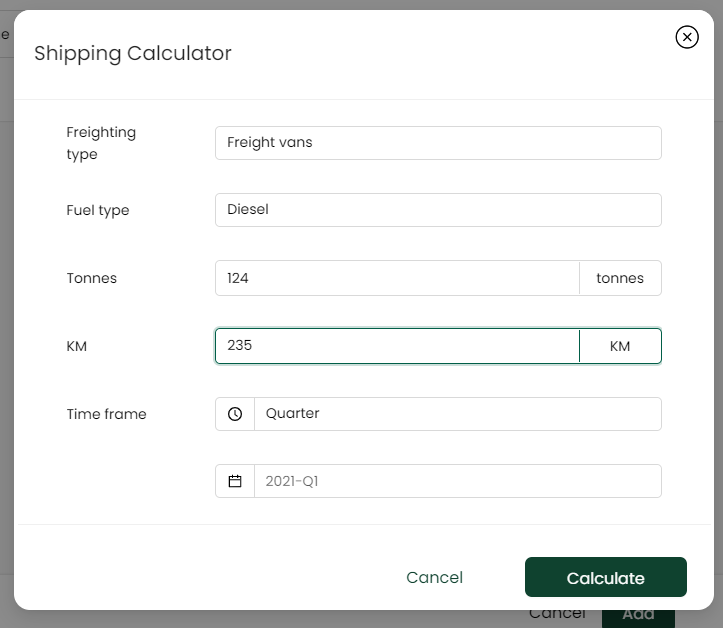
Freight Van Emission Calculator
All of the necessary information to compute is as follows;
-
Fuel Type : You can choose among several options of fuel that your specified freight van might consume. All options being; Diesel, Petrol, CNG, LPG, Battery Electric, or unknown.
-
Tonnage of goods : You must know the weight of the goods you are having transported in tonnes.
-
Distance Travelled : The distance travelled by the freight van must be converted into Km before being plugged into the calculator.
-
Time Frame : Finally, you must have the time frame which the goods were being transported.
Now coordinate which office it is representative of and provide a title, and if necessary you can produce a description for the activity to include further detail.

Updated about 2 months ago